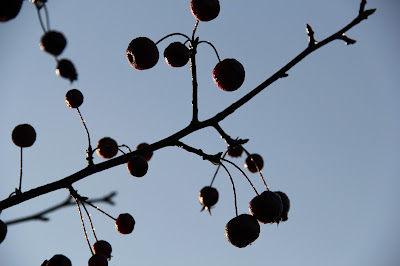*This is a post that I have been trying to write for quite some time and I'm still not sure if it says what I want, but here goes nothing.*
When people ask me what I do for a living, I usually tell them that I run an environmental education program.
This is true, but it is only part of the story.
My job is really about "place".
I teach children and adults about the place that I call home - Mid-Michigan. Teaching about the environment is wonderful and necessary, but I believe it can't be just about the abstract concept of "the environment".
When I teach about forests, I want to talk about the forests that people can see a short walk or drive from home. Why would I talk about the forests of the Pacific Northwest or the Amazon rain forest when there are real forests nearby?
When I talk about wetlands, instead of talking about the Everglades or the Mississippi Delta, I talk about the marshes, swamps and vernal ponds found close to home.
When things work out, I get to take students to woods and wetlands and let them use their senses - touch, hear, see, smell, and (occasionally) taste.
I want students to know and understand the habitats and natural inhabitants that make Michigan unique, that give it a sense of place.
I want the students and the adults that I teach to not only know which species live here, but also how and why those species survive. I want them to wonder "How does a butterfly live through Michigan winters as an adult?"
I want them to wonder what is happening underneath all of the snow. And to want to know so badly that they will go dig it up to find out.
When I teach about adaptations, I want to use real world examples that everyone can relate to such as the color difference between male and female Red-winged Blackbirds. Many students (and adults) don't even realize that these two birds are the same species. I want kids to be able to go home and explain to their parents why the male and female birds look so different from each other.
Sometimes I act silly when I teach - acting out the way a Great Blue Heron stalks through water...
or the way a White-tailed Deer bobs its head when it is trying to figure out whether something is dangerous..
At other times I am completely serious; such as when I talk about the potential dangers of eating things found in the woods. I don't want to scare students, but I do want them to be mindful. To know that there are things in the woods that can harm you gives a bigger thrill to exploring.
I want people to meet their local plants and animals. It's easy to say "I care about the environment"; it's better to recognize and name the plants and animals that are my neighbors. These are the things that make a place unique. If I know my wild neighbors I am more likely to respect them and want to protect them. This is why I use photographs that I have taken whenever possible in presentations.
When I teach about place, I am summing up everything that makes Mid-Michigan unique and special.
This place called Michigan is surrounded by the four of the five Great Lakes. The lakes moderate our climate and give us an abundance of fresh water that is unheard of in the rest of the world. Their impact is huge. They make Michigan the place that it is.
The lakes were carved out by glaciers during the last ice age. Beyond the lakes, the glaciers impact our topography in other ways. In some places they carved out deep valleys or scoured rock bare,

but most of the state is covered by sand, rock, and gravel. These sediments were picked up by the glaciers in Canada, ground down, and finally deposited in a thick layer over Michigan. When you dig a hole in Michigan, you are digging down through time. The sediments tell a story of the past. When I did a hole I am looking back ten thousand years to what the glacier has left behind, and even further back into time.
When I visit the shores of the Great Lakes I see rocks that formed hundreds of millions of years ago when Michigan was covered by a shallow tropical sea. This legacy is reflected in our state stone - the Petoskey stone. I can talk about this rich geologic history when I teach students about rocks and minerals.
The lakes and the soils left behind by glaciers allowed Michigan to grow one of the richest forest habitats in eastern North America. Lumber was harvested across the state for nearly a hundred years to build not only the cities and towns of Michigan, but also the cities of the rest of the nation.
To know a place requires you to know all of these things. Place is not just location. It is the past and the present. It is the
sum of the physical and human characteristics of a location. Physical
and cultural geography, geology, history, economics, and biology combine
to describe place.
The desire to know a place requires you to ask questions. Why do some animals call this place home and not others? What conditions allow this plant to grow in some locations and not others? What are those insects that live in that pond?
I hope that after an outdoor or classroom presentation, the students will leave with these questions in their mind. Hopefully they will pursue those questions and find an answer. If they do, they will have a greater knowledge of "place" and I will have done my job. I'm keeping my fingers crossed and my curious mind open.



















































